Understanding Shunts in Electrical Systems
In the realm of electrical engineering, a shunt plays a critical role in ensuring the accuracy and safety of current measurement. Whether you’re working with battery banks, solar panels, or sophisticated industrial equipment, understanding what a shunt does and how it integrates into an electrical system can dramatically improve efficiency and diagnostic precision. In this article, we’ll explore everything you need to know about shunts, from their working principles to real-world applications.
- What Is a Shunt in an Electrical System
- The Purpose of a Shunt in Electrical Systems
- Types of Electrical Shunts
- Where Shunts Are Used in Electrical Systems
- Installing a Shunt in an Electrical System
- Advantages of Using a Shunt
- Limitations of Shunts
- Shunt vs Hall Effect Sensor
- Maintenance and Monitoring of Shunts
- Custom Shunt Designs
- Safety Tips When Working with Shunts
- Future Trends in Shunt Technology
- Common Mistakes to Avoid with Shunts
What Is a Shunt in an Electrical System?
A shunt is a precision low-resistance device used to measure electric current by creating a voltage drop proportional to the current flowing through it. It essentially acts as a bypass that redirects part of the current in a circuit, allowing sensitive instruments to safely and accurately gauge electrical flow without being directly exposed to the high current itself.
How Shunts Work
The operational principle of a shunt is based on Ohm’s Law: V = IR (Voltage = Current × Resistance). By placing a known low-resistance component (the shunt) in series with the load, the voltage drop across it can be measured. Since the resistance is known and fixed, the current can be calculated precisely.
For example, if a 0.01-ohm shunt has a 0.1V drop across it, the current is:
I = V / R = 0.1V / 0.01Ω = 10A
This simplicity and accuracy make shunts indispensable in various electrical monitoring applications.
The Purpose of a Shunt in Electrical Systems
Accurate Current Measurement
One of the primary uses of a shunt is to enable precise current measurement without directly introducing high currents to measuring instruments. This is particularly useful in environments where safety, sensitivity, and accuracy are paramount.
Circuit Protection
Shunts can also be used in protective circuits. If current exceeds safe thresholds, the voltage drop across the shunt will reflect this, allowing the system to trigger alarms, shutdowns, or diversions to prevent damage.
Load Balancing and Diagnostics
In systems with multiple parallel paths—such as in data centers, battery banks, or solar arrays—shunts help monitor and balance load distribution. They are key to diagnosing inefficiencies, malfunctioning components, or potential overload conditions.
>>See also Using EcoFlow Delta Pro as a UPS for Reliable Backup Power
Types of Electrical Shunts
Precision Shunt Resistors
These are used in measuring devices and are manufactured to extremely tight resistance tolerances. They are often found in multimeters, battery monitors, and energy meters.
Current Shunt Monitors (CSMs)
These are integrated circuits that combine a shunt resistor with differential amplifiers, converting the voltage drop into digital signals for microcontrollers or processors.
PCB Shunts
These are small form-factor shunts embedded directly onto printed circuit boards. They’re typically used in compact electronic devices where space is at a premium.
High Current Shunts
Used in industrial applications and electric vehicles, these shunts are built to handle hundreds or even thousands of amps, with robust construction for durability.
Materials Used in Shunts
Material choice is critical in shunt design to ensure stable resistance across temperature changes. Common materials include:
Manganin: Offers stable resistance over a wide temperature range.
Nickel-Chromium Alloys: Excellent for high-precision applications.
Copper-Manganese Alloys: Known for durability and stable resistance.
Where Shunts Are Used in Electrical Systems
Automotive Applications
Modern vehicles—especially electric and hybrid models—use shunts to monitor battery usage, charge levels, and motor current. This enables efficient energy management and helps prevent over-discharge.
Renewable Energy Systems
Solar and wind installations rely heavily on current monitoring. Shunts are used to measure panel output, battery charge/discharge currents, and inverter performance.
Data Centers and Server Farms
To maintain uptime and optimize performance, data centers use shunts to monitor individual rack or server power consumption. This ensures balanced loading and helps pinpoint failures quickly.
Industrial Machinery
In heavy industries, machinery with motors, pumps, and compressors are equipped with shunt-based monitoring systems for predictive maintenance and energy optimization.
Consumer Electronics
Even laptops and smartphones use miniature shunt resistors to monitor internal battery flow, preventing overheating or overcharging.
Installing a Shunt in an Electrical System
Choosing the Right Location
A shunt should be installed on the negative side of the circuit in most DC systems to ensure safety and standardize voltage readings. However, some systems may require positive-side placement.
Secure Mounting
High-current shunts generate heat, so they should be mounted on heat sinks or ventilated panels. Ensure proper torque on connection terminals to avoid arcing or voltage drops.
Signal Wiring
The voltage drop across the shunt is typically very small (millivolts). Therefore, twisted-pair shielded cables are recommended to minimize noise and ensure signal integrity.
Calibration and Testing
Once installed, the system should be calibrated using a known current source. Regular testing is also recommended to ensure long-term accuracy.
Advantages of Using a Shunt
High Accuracy
Because of their low resistance and predictability, shunts provide extremely accurate current measurements when paired with proper instrumentation.
Cost-Effective
Compared to current transformers and Hall-effect sensors, shunts are inexpensive and offer reliable performance for many applications.
Simplicity and Reliability
They are passive components with no moving parts or complex electronics, making shunts durable and low-maintenance.
Limitations of Shunts
Heat Dissipation
High currents through a shunt can generate significant heat, requiring cooling strategies to prevent damage.
Voltage Drop
While usually minimal, the voltage drop across a shunt can still affect sensitive circuits if not properly accounted for.
Isolation Issues
Because they measure current directly, shunts do not provide electrical isolation. In high-voltage systems, this can pose a risk and may necessitate additional safety measures.
Shunt vs Hall Effect Sensor
|
Feature |
Shunt |
Hall Effect Sensor |
|
Accuracy |
Very high |
Moderate to high |
|
Cost |
Low |
Higher |
|
Isolation |
No |
Yes |
|
Temperature Sensitivity |
Moderate |
Low |
|
Size |
Compact |
Varies |
|
Application Scope |
Broad, especially DC systems |
Ideal for high-voltage AC/DC |
Maintenance and Monitoring of Shunts
Periodic Inspection
Inspect shunts for signs of corrosion, overheating, or mechanical stress. Any discoloration or residue may indicate excessive current or poor connections.
Cleaning Contacts
Clean connection terminals with isopropyl alcohol and a lint-free cloth to ensure optimal conductivity.
Software Monitoring
Modern shunt systems often integrate with data loggers or networked monitoring platforms. These systems can generate alerts for abnormal currents or trends.
>>See also How Do You Convert Watts to Amps
Custom Shunt Designs
In specialized applications, engineers often design custom shunts with specific resistance values and thermal characteristics. These customizations may include:
Variable Geometry: To fit limited spaces
Integrated Amplifiers: For signal conditioning
Environmental Sealing: For marine or aerospace applications
Safety Tips When Working with Shunts
Always disconnect power before installing or modifying shunts.
Use insulated tools to avoid short circuits or electric shocks.
Confirm polarity when connecting voltage sense lines.
Monitor temperature, especially in high-current installations.
Label all shunts clearly, particularly in complex systems.
Future Trends in Shunt Technology
Smart Shunts
With embedded microcontrollers, smart shunts can self-calibrate, communicate via protocols like CAN or Modbus, and support advanced diagnostics.
High-Frequency Shunts
For power electronics and switching circuits, new shunt designs are optimized for accurate high-speed current measurement.
Miniaturization
Consumer and wearable electronics drive demand for ultra-small, high-precision shunts that maintain performance without consuming space.
Common Mistakes to Avoid with Shunts
Using incorrect resistance values: This can lead to inaccurate measurements.
Improper wiring: Can result in signal loss or dangerous short circuits.
Ignoring heat: Overheating is one of the main causes of shunt failure.
Not using proper cabling: Thin or long cables can introduce noise and resistance.
Real-World Example: Battery Monitoring with a Shunt
Consider a 12V battery system used in RVs. A shunt is installed on the battery’s negative terminal and connected to a battery monitor. As devices draw power from the battery, the shunt measures current and provides real-time data on amp-hours consumed, charge state, and system load. This not only helps prevent over-discharge but also maximizes battery lifespan.
Why Every Electrical System Needs a Shunt
The shunt is an unsung hero in modern electrical systems. Its role in enabling safe, accurate, and real-time current measurement cannot be overstated. Whether you're designing a solar energy system, managing a data center, or simply monitoring your off-grid RV, integrating a properly selected and installed shunt is essential. With advancements in materials, integration, and smart monitoring capabilities, the future of shunt technology looks brighter than ever.
By now, you should have a thorough understanding of how shunts contribute to electrical system efficiency, safety, and precision. Incorporating a shunt into your project might just be the smartest power decision you make.

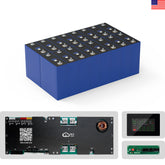

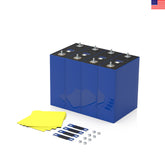

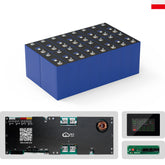

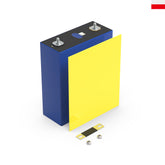

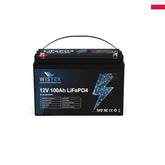
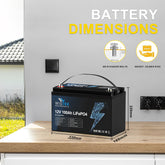



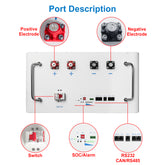
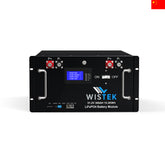
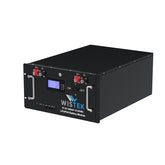


Leave a comment
All blog comments are checked prior to publishing